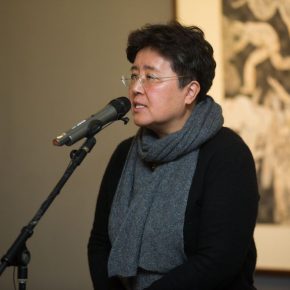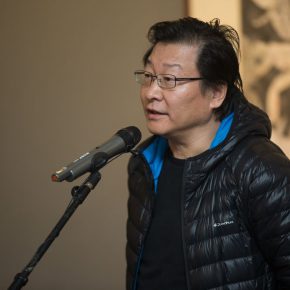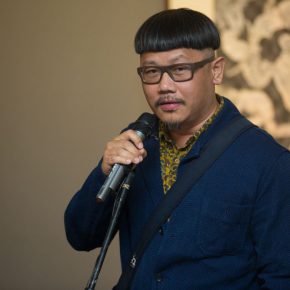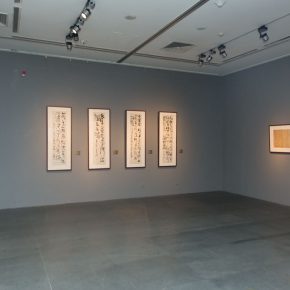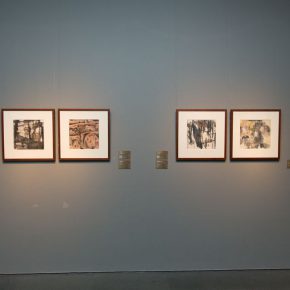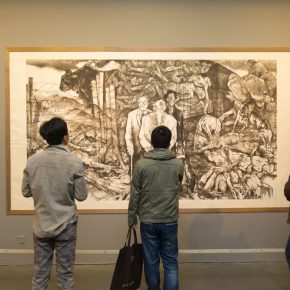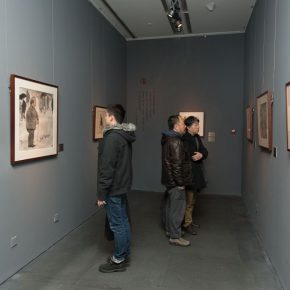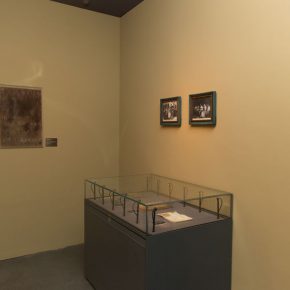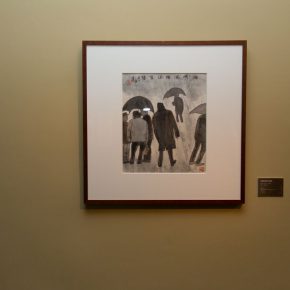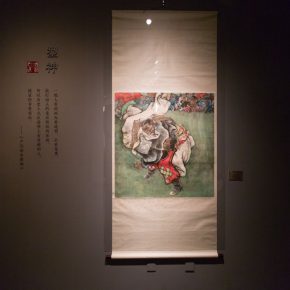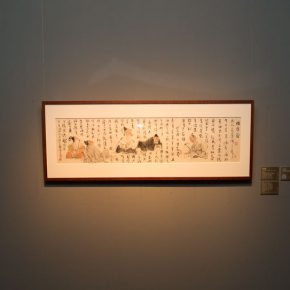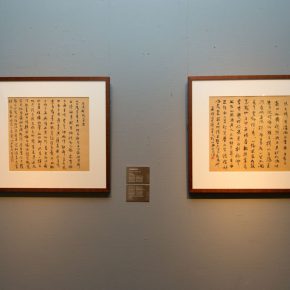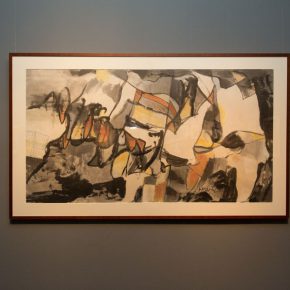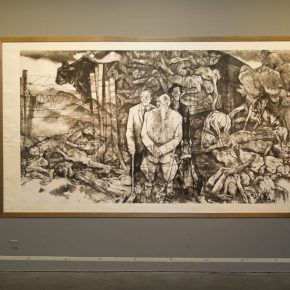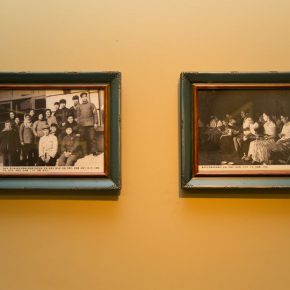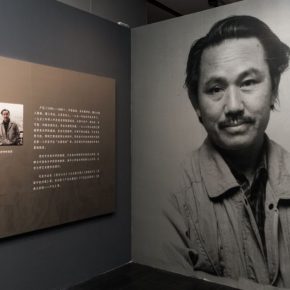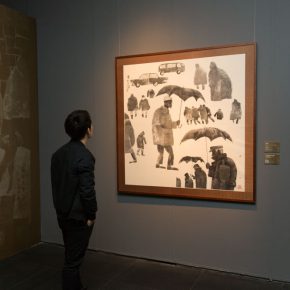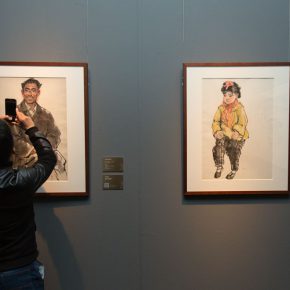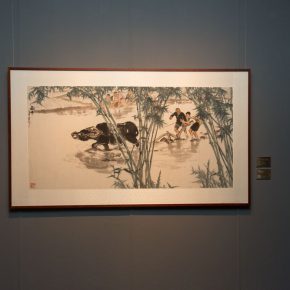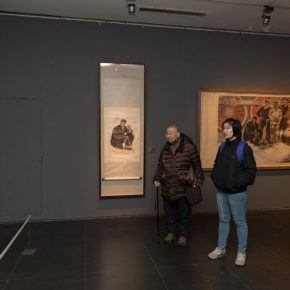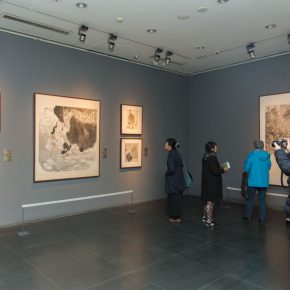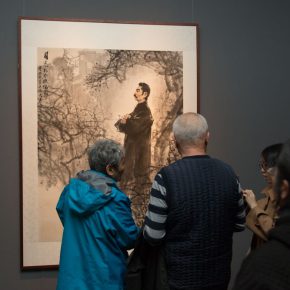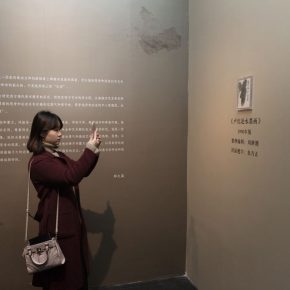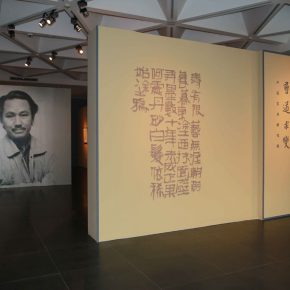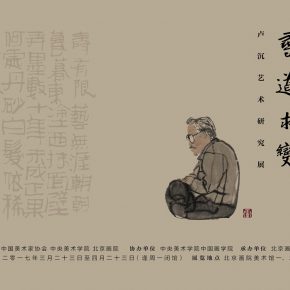
At 10:00 am on March 23, 2017, hosted by the China Artists Association, the China Central Academy of Fine Arts and Beijing Fine Art Academy, co-organized by the School of Chinese Painting, CAFA, and undertaken by the Art Museum of Beijing Fine Art Academy, “Searching for the Way and Change – Lu Chen’s Art Exhibition” grandly opened at the Art Museum of Beijing Fine Art Academy. Wu Hongliang, Vice President of Beijing Fine Art Academy and Director of the Art Museum of Beijing Fine Art Academy hosted the opening ceremony, Wang Mingming, President of Beijing Fine Art Academy, the famous art theorist Prof. Liu Xilin from the Central Academy of Fine Arts, An Yuanyuan, Deputy Director of National Art Museum of China, Li Yang, Deputy Dean of the School of Chinese Painting, CAFA, and Lu Chen’s son Lu Yue delivered a speech at the opening ceremony. In addition, Tian Liming, Vice President of the National Academy of Arts, Lei Bo, Party Secretary of Beijing Fine Art Academy, Professors Yao Mingjing, Liu Qinghe, Wu Yi, Yu Yang from the Central Academy of Fine Arts, Lu Chen’s family members, as well as Jiri, Vice President of the Academy of Fine Arts in Prague, Czech Republic and other Chinese and foreign guests attended the opening.
Lu Chen graduated from the Central Academy of Fine Arts in the 1950s, and he taught in the Department of Chinese Painting after he graduated in 1958, learning from Jiang Zhaohe and Ye Qianyu, masters of Chinese painting of the 20th Century and he was an expert of independent ideas and innovative spirits in teaching and creation. In the ground-floor exhibition hall, it starts from the words diverted from inscriptions of the “Self-Portrait” by Lu Chen – “Life is limited, but art is boundless. Day after day, paintings everywhere, facing the wall then playing with ink, but it has not yet succeeded after decades, where is the cinnabar, I started graffiti when I am a white-headed old man.” On January 23, 2004, Lu Chen passed away when he was only 69 years old, viewing his career of artistic creation, if we use a word to sum it up, the theme of this exhibition “searching for the way and change” is the faith pursued by Lu Chen during his life.
It also presents the book “Lu Chen: On Ink and Wash” which was re-edited and increased by Beijing Fine Art Academy and the exhibition is divided into four parts, including “Shape and Spirit”, “Brush and Line”, “Quantity and Quality”, “Construction of Ink”, and each one is joined with a passage of text by Lu Chen. It is the third time for Lu Chen’s works to be showcased following the “Yi Yun Shu Huai – Lu Chen’s Freehand Figure Exhibition” in 2013, “Love and Elegy – Zhou Sicong and Lu Chen’s ‘Miners’ Group Painting Research Exhibition” in 2015. It is different from the previous shows as it brings together more than 70 works of realistic figure painting, calligraphy, freehand figure painting and the ink composition from the 1960s to the early new century, and the content of the work is more extensive and many works are presented for the first time.
Speaking of Lu Chen’s artistic creation, it is closely related to the famous piece entitled the “Locomotive Doctor” finished in 1964. The painting depicts a group of workers repairing the locomotive then watching a locomotive which is driven off, they include old workers, young workers, technicians, who are standing or crouching, lined up, they seem to be compact and scattered. This work is considered to be a classic of Lu Chen’s realistic figure paintings. After the late 1970s, Lu Chen began to reflect on the education and creation of Chinese painting since the 1950s. He is the first person who proposed the teaching of Chinese painting saying it “should be liberated from copying the object” in the Central Academy of Fine Arts, he proposed many ideas, such as “the shape is the product of the feelings, rather than the rational product”, “going to sketch rather than focusing on the volume and face”, “it is necessary for Chinese painting to be flat, there contents are flat”. The spearhead directed to the drawbacks of the teaching and creation of Chinese painting taking realism as the banner. It can be regarded as Lu Chen’s “change” in the exploration of the language of Chinese painting.
How is painting liberated from copying objects? Lu began to explore the language of painting with this problem, during which he advocated developing it based on the modern styles, adding that the courses in “Skills and Production”, “Color Composition”, “Ink Composition”, and “Calligraphy and Seal”, etc., are aimed at weakening the training in sketching while strengthening the research and learning of forms and rules, to then inspire students’ imagination and creativity. For this, Lang Shaojun once said that Lu Chen’s teaching ideas, exploration of reform, greatly shakes the realism of the mainstream traditions for the teaching of the School of Chinese Painting, CAFA, so that it tends to be open and diverse. During this period Lu Chen and his wife Zhou Sicong cooperated in the creation of the “Miners” series, the use of the hyperspace-thinking of modern ink, and the use of new forms such as thick ink and rubbing to create a series of classic works including “Qing Ming” (1990), “It is Rainy and the Chung Yeung Festival is coming” (1992). He performed the work by deformation, graphic composition and ink rubbings to draw the figure, completely abandoning the realistic style of the “Locomotive Doctor”.
Li Kuchan once said: “Traditional Chinese calligraphy and Chinese painting are combined.” Lu Chen was a literati artist preferring Chinese cultural traditions, when he explored the skills of modern ink, he also created a large number of literati-style works centered on traditional outlining, paying attention to savor the brush and ink, such as “Li Bai Caught the Moon Figure”, “Invitation to Wine”, “Dongpo Walked and Recited Poems Figure”. In his old age he also created a number of small paintings themed on the citizens who walked with a bird in the morning, and had a leisurely daily life. This small painting of ink and wash themed on ancient literati or modern people’s life, integrates the poetry, calligraphy and painting, which is considered an unique form of contemporary painting. For this, Lu Chen tried to find a balance between traditional calligraphy and painting. Shao Dazhen reviewed this stating, “The reason he attached great importance to all kinds of new explorations; is the fun, he was in love with the form of brush and ink, regardless of the ideal or fun, it is far from the realistic description. In the last decade, the works of traditional style? dominated”.
Lu Chen is considered the thinker of the artists in that era, in his short artistic career, he constantly thought of changes, from “Locomotive Doctor” to a series of creation of ink compositions including “Qing Ming” and then the freehand figure painting, he continued to explore the new painting language, as Lu Chen had written the words in his own paintings: “I dream of forming a non-stylized artistic style of free expression, and I am still looking for an home for this feeling and the future is unknown to me.” Unfortunately, Lu Chen passed away before he completely finished his own exploration of ink, but the road of “Searching for the Way and Change” has not ended, as an art educator, his teaching and ideas on reform in Chinese painting in CAFA has influenced and cultivated many contemporary Chinese ink artists.
The exhibition remains on view till April 23.
Text by Lin Jiabin, translated by Chen Peihua and edited by Sue/CAFA ART INFO
Photo by Yang Yanyuan/CAFA ART INFO





